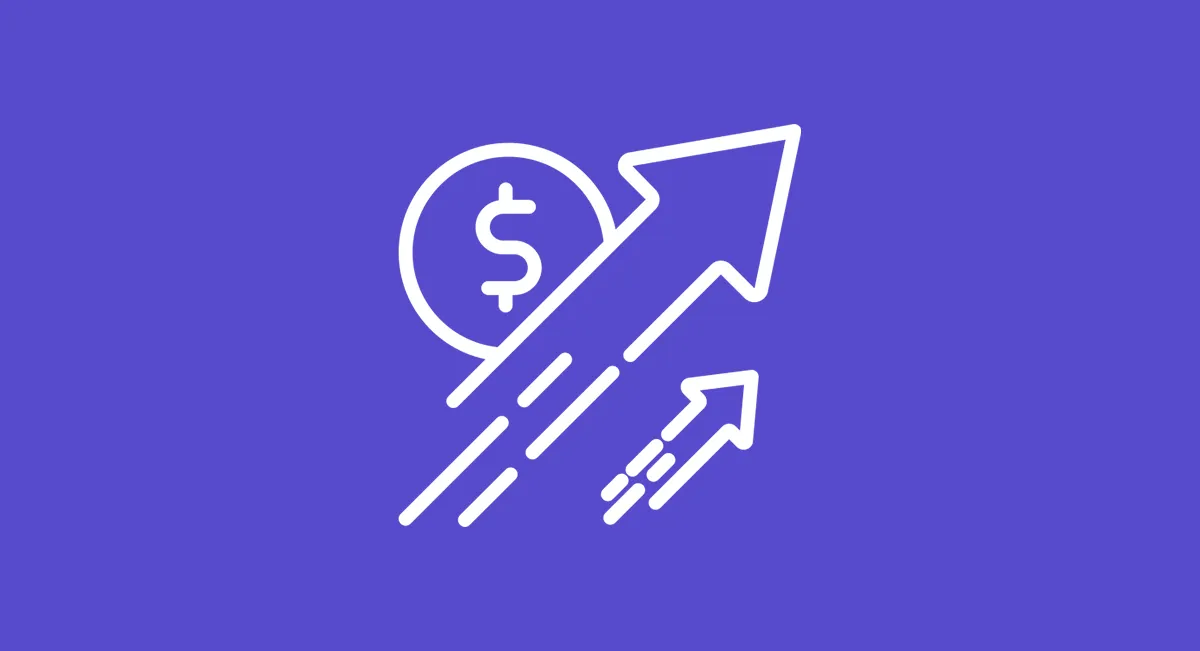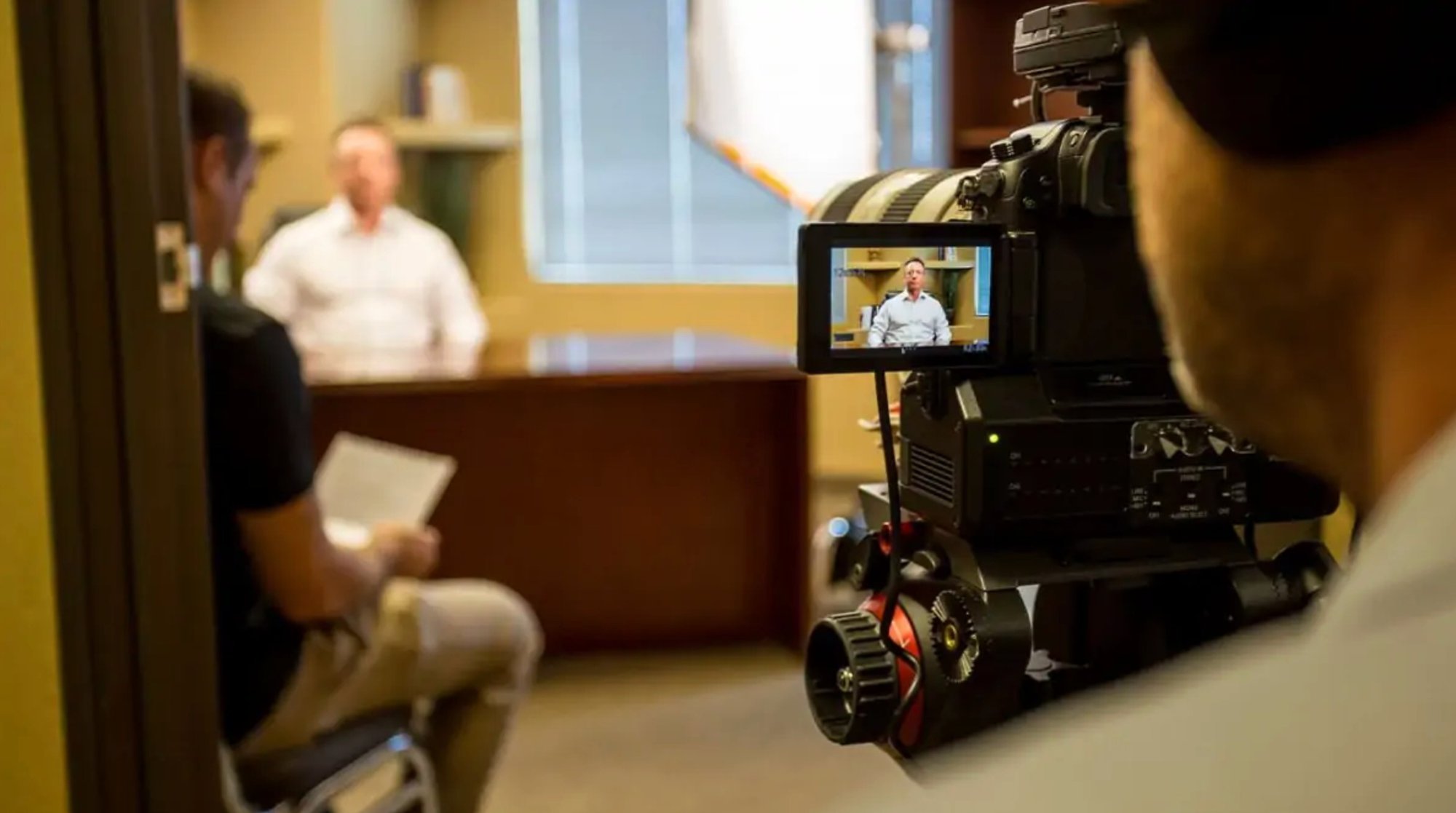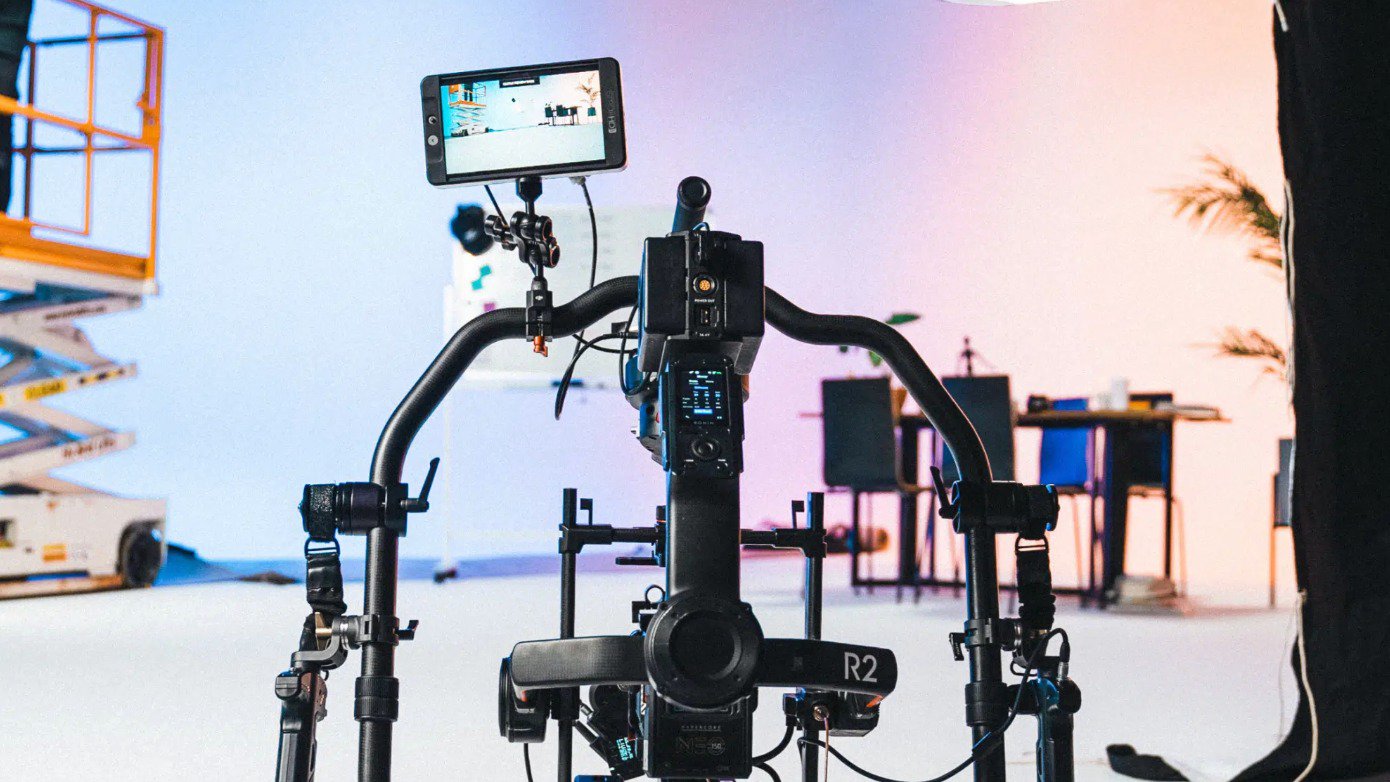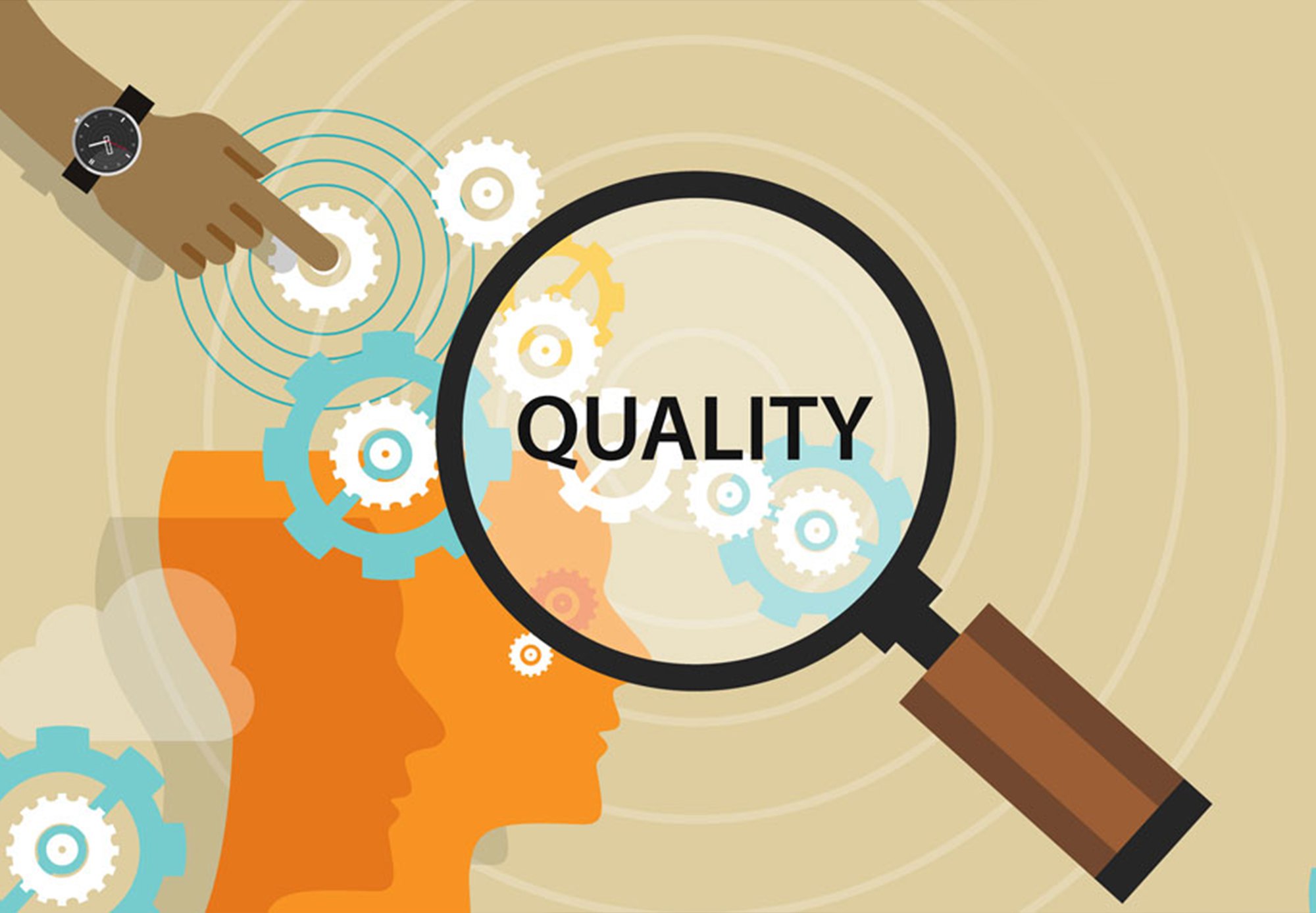In the realm of virtual connectivity and in the wake of a global pandemic, the remote interview has become a new norm. They enable meaningful exchanges irrespective of geographical boundaries. Whether you're a job seeker, a business owner conducting client testimonials, or a filmmaker capturing captivating interviews, mastering the art of remote interviews is crucial.
This comprehensive guide will provide valuable tips and best practices to excel in remote interviews, from setting up the right tech equipment to creating a conducive physical space. Read on to learn how to craft remote interviews that resonate with authenticity and professionalism.
Preparing Your Virtual Stage
Tech Set-Up
Before diving into a remote interview, it's essential that your tech set-up is optimized for a seamless experience.
Utilize these tips to set yourself up for success:
- Test your internet connection beforehand to avoid any connectivity issues during the interview. A stable and high-speed internet connection is vital for a smooth remote interview.
- Ensure your browser is up to date to ensure compatibility with the video conferencing platform you'll use.
- Close any programs or applications running in the background to free up system resources and minimize the risk of technical glitches.
- Silence your phone and computer notifications to minimize distractions and maintain focus throughout the interview.
- Connect an external microphone. Investing in an external mic can significantly improve the audio quality of your remote interviews. Position the microphone close to you to capture clear and crisp sound.
- Use earbuds if you don't have an external mic. They can help reduce background noise and echo, providing a more professional audio experience.
- Ensure that all your equipment has the necessary permissions enabled on your device to avoid any interruptions during the remote interview.
- Do a test run of your equipment early to make sure everything is working correctly on your end.
Creating the Right Physical Space
A conducive physical space can significantly impact the outcome of a remote interview. Your surroundings tell a story about who you are.
Consider the following factors when setting up your environment:
- Choose a quiet room or area to conduct your interview without interruptions or background noise. Inform others in your household and put a note on your door reminding them about the interview to minimize potential disturbances.
- Clear your workspace of any clutter or distractions that could divert your attention or be visible during the remote interview. Keep your background simple, tidy, and professional.
- Keep a glass of water nearby but off-screen in case your mouth gets dry or you get a tickle in your throat.
- Adjust your lighting. Position yourself facing the light source to avoid shadows. Try facing a window, as natural light is ideal. If that's not possible, ensure that your space is well-lit with a three-point lighting technique:
- Place the main light close to the camera at a 45-degree angle. This light should do most of the work.
- Place a fill light opposite the main light to fill in shadows. It shouldn't be as bright as the main light.
- Place a third light at a 45-degree angle behind you, high up and slightly to the side. This will provide backlight.
Remember to open your camera to preview what your audience will see and adjust accordingly.
Nailing Your On-Screen Presence
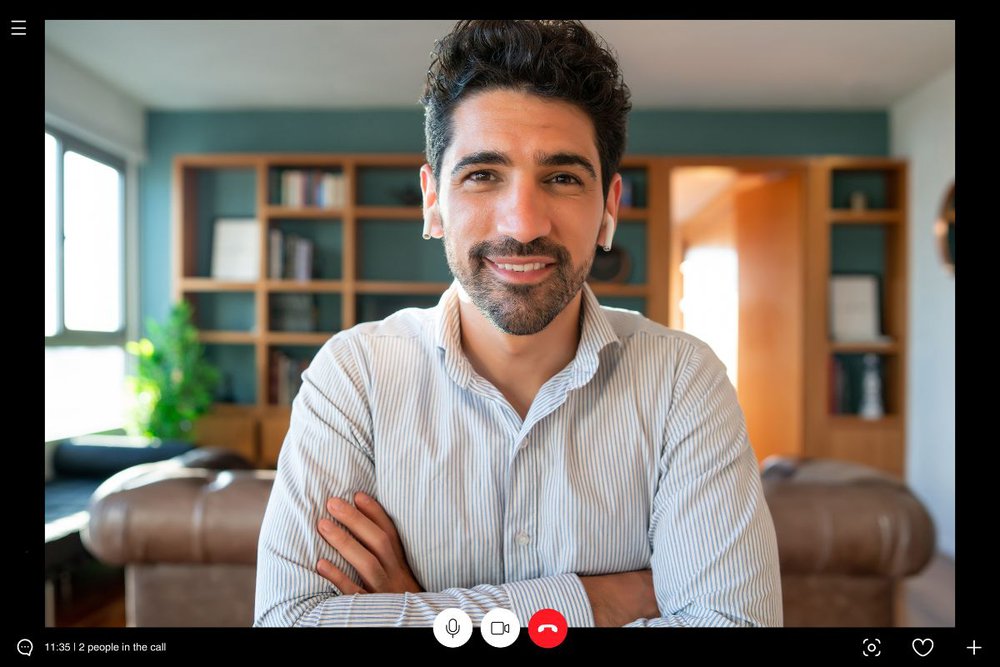
Dress to Impress
Your appearance plays a significant role in remote interviews. Dressing the part will help you feel confident and make a positive impression.
These guidelines will make a positive visual impression:
- Dress professionally, considering the nature of the interview and the industry you're in. While you may not need to wear a full suit, dress in a way that reflects your professionalism and respects the context of the interview.
- Avoid distracting patterns. Bright, busy patterns or stripes can appear blurry or distorted on video. Choose solid colors or subtle patterns that won't be visually distracting.
- Stay away from wearing black. Bold colors are more appealing on screen.
Look Your Best
Your camera angle and positioning can greatly impact how you appear on screen. Take the time to ensure you are putting your best face forward.
Follow these steps to look your best:
- Adjust your camera to be vertical and straight at eye level, or position it just above you. A slight downward angle is very flattering.
- Position yourself in the center of the frame or just barely off-center. You want your face to take up a third of the screen. Don't lean in too close or linger too far away.
- Maintain good posture. Sit up straight, with your shoulders relaxed and your back supported. Good posture exudes confidence and professionalism.
- Look directly at the camera to establish eye contact with the interviewer. This creates a sense of connection and engagement. Try to avoid looking at the screen.
Foster Genuine Connections
It is critical to preserve a sense of normalcy during the interview, regardless of the remote setting, and to treat your remote interview as if it were in person. Being natural helps convey your engagement and authenticity.
Use the following tips to create a face-to-face feel:
- Take a deep breath and organize your thoughts before the remote interview. It's okay to familiarize yourself with the interview questions, but don't practice your answers. You want to sound genuine, not rehearsed.
- Don't let your nerves get the best of you. Smile, laugh, and try to have fun. Remind yourself that it's okay to be imperfect and embrace any nervousness or mistakes as part of the process.
- Be yourself. Authenticity is key in a remote interview. In a recent survey, 90% of people said authenticity was important when deciding what they like and support. Stay engaged and let your personality shine.
- Be natural and respond as if you were having a conversation. Express genuine enthusiasm and interest in the conversation. Like in face-to-face conversations, natural hand gestures can help emphasize your points and make your interview more engaging.
- Give your full attention to the interviewer, actively listening to their questions and comments. Take pauses before responding. This shows that you've truly absorbed their question and are fully present.
- Don't panic. Remember, no matter how much you try to control everything, surprises can still happen. If a disruption or mistake happens, keep going. If your remote interview is being recorded, editing will happen later.
Leveraging Your Remote Interview for Marketing
Remote Interview videos are valuable assets in marketing strategies. Companies can create compelling and authentic content that resonates with their target audience by capturing genuine interactions and conversations in interviews. The videos can then be repurposed across various marketing channels, offering opportunities for uses beyond their initial recording.
Consider these strategies to make the most of your interviews:
- Once you've conducted your remote interviews, edit the footage to highlight the most compelling moments and key messages. This will create a more polished and impactful final product.
- Publish your remote interview on platforms that align with your target audience and marketing goals. This could include your website, social media channels, or industry-specific platforms. Vimeo is a popular hosting platform that offers lots of room for adjustments.
- Incorporate testimonials! If your interviews include client testimonials, leverage them in your marketing materials to build credibility and trust. Testimonials can be powerful tools for attracting new clients and customers.
- Craft engaging custom GIFs from interview footage to add flair to your email marketing campaigns.
- Use "Pull Quotes" for social media. Extract concise, impactful sound bites from interviews to create brief, compelling content suitable for social media ads and organic posts.
- When publishing your remote interview online, optimize it for search engines by using relevant keywords and including descriptive titles and meta descriptions. SEO will improve visibility and reach.
Conclusion
In a world where remote work has become the norm, remote interviews have become vital to many professional endeavors. They offer a unique opportunity to showcase your skills and personality in a different setting. They can be a powerful tool to humanize a brand and provide insights into its values and culture.
Adhering to these video interview tips leaves you well-equipped to navigate challenges effectively, create a positive impression, and present yourself in the best possible light. With the right approach, your remote interview can help you succeed in today's digital landscape, whether for job opportunities, client testimonials, or filmmaking projects.
So, go ahead and embrace remote interviews with confidence and authenticity!
Frequently Asked Questions
What makes video especially powerful for SaaS companies?
SaaS products often have abstract features, video brings them to life through visuals, animation, and storytelling. See how we helped explain complex solutions in our Qventus Case Study.
Which video formats are most effective for tech marketing?
Explainer videos, customer success stories, onboarding tutorials, and UI walkthroughs work best. Check out our Software Demo Video Guide for tips.
How can SaaS brands measure video ROI?
Track metrics like trial signups, demo requests, and time-on-site. For more ideas, our Video Marketing Value blog breaks down where video drives conversions.
Can video help reduce support tickets and onboarding time?
Definitely, product tutorials and onboarding videos improve user self-service. Our Video Production Services can help create these assets at scale.
If you're ready to film a remote interview or testimonial, let Levitate Media get you started. Contact us today!


